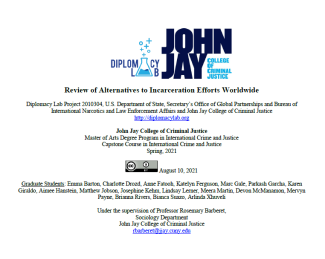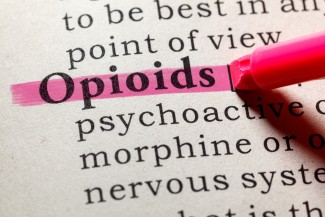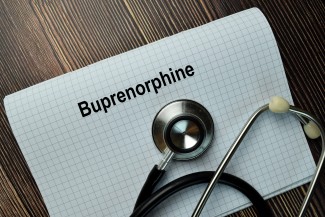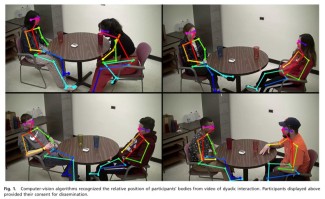Search
Patient and provider perspectives on self-administered electronic substance use and mental health screening in HIV primary care
Abstract
Background
Substance use disorders, depression and anxiety disproportionately affect people with HIV (PWH) and lead to increased morbidity and mortality. Routine screening can help address these problems but is underutilized...
Trends in Buprenorphine Use in US Jails and Prisons From 2016 to 2021
Source:
Discussion
In the US, buprenorphine use...
Work Environment Factors and Prevention of Opioid-Related Deaths
Opioid use disorder (OUD) and opioid overdose deaths (OODs) are prevalent among US workers, but work-related factors have not received adequate attention as either risk factors or opportunities for OOD prevention. Higher prevalence of OOD...
Trends in healthcare expenditures and resource utilization among a nationally representative population with opioids in the United States: a serial cross-sectional study, 2008 to 2017
One of the most serious public health concerns in recent decades has been the opioid epidemic in the United States (US). Over 9.9 million Americans aged 12 and up abused prescription pain drugs in 2018, and roughly 2 million Americans were...
“Hidden gem” from the ’70s suggests counsellors generate the outcomes they expect. An Effectiveness Bank analysis
The Effectiveness Bank has stopped routinely issuing research analyses, but we couldn’t leave this gem from the ’70s figuratively gathering dust on the shelves of the British Library. Belied by an under-stated presentation, its practice...
Review of Alternatives to Incarceration Efforts Worldwide
The link between reducing pain medication, overdose and mental health crisis
In response to the concerning numbers of opioid-related deaths in the US, there has been a recent focus on opioid prescribing trends, which has shown an increase in opioid tapering among patients prescribed long-term opioid therapy. However...
High-dose buprenorphine induction in the emergency department for treatment of opioid use disorder
In response to the rising efficacy of the illicit opioid drug supply and often observed delays in access to follow-up therapy, emergency departments (EDs) occasionally utilize a high-dose buprenorphine induction method for the treatment of...
High-dose buprenorphine induction in the emergency department for treatment of opioid use disorder
Abstract
Importance: Emergency departments (EDs) sporadically use a high-dose buprenorphine induction strategy for the treatment of opioid use disorder (OUD) in response to the increasing potency of the illicit opioid drug supply and...
Substance Use Among Young Mothers: An Analysis of Facebook Posts
Abstract
Background:Substance use among young pregnant women is a common and significant public health concern associated with a number of adverse outcomes for both mothers and infants. Social media posts by young women can provide...
Is telemedicine the answer to rural expansion of medication treatment for opioid use disorder? Early experiences in the feasibility study phase of a National Drug Abuse Treatment Clinical Trials Network Trial
Abstract
Telemedicine (TM) enabled by digital health technologies to provide medical services has been considered a key solution to increasing health care access in rural communities. With the immediate need for remote care due to the...
Adolescent drug use before and during U.S. national COVID-19 social distancing policies
During the COVID-19 pandemic, countries around the world have introduced lockdown restrictions and social distancing measures to reduce the spread of the virus. Researchers are keen to understand how these policies and new measures have...
Development of an unannounced standardized patient protocol to evaluate opioid use disorder treatment in pregnancy for American Indian and rural communities
Abstract
Background: Opioid use disorder (OUD) disproportionately impacts rural and American Indian communities and has quadrupled among pregnant individuals nationwide in the past two decades. Yet, limited data are available about access...
An Integrative Review of Measuring Caregiver Burden in Substance Use Disorder
Abstract
Background: Family caregivers contribute to engagement in treatment and adherence, reduced substance misuse and relapse, and increased well-being of recipients with substance use disorder. However, providing care has also been...
Cardiorespiratory and Immunologic Effects of Electronic Cigarettes
Mindfulness-Oriented Recovery Enhancement Remediates Hedonic Dysregulation in Opioid Users: Neural and Affective Evidence of Target Engagement
Abstract
Addiction neuroscience models posit that recurrent drug use increases reactivity to drug-related cues and blunts responsiveness to natural rewards, propelling a cycle of hedonic dysregulation that drives addictive behavior. Here...
Drug Overdose Deaths Before and After Shelter-in-Place Orders During the COVID-19 Pandemic in San Francisco
Incidence and Lethality of Suicidal Overdoses by Drug Class
Abstract
Importance Prior lethality analyses of suicide means have historically treated drug poisoning other than alcohol poisoning as a lumped category. Assessing risk by drug class permits better assessment of prevention opportunities.
...Alcohol Narrows Physical Distance between Strangers
Abstract
Pandemic management is likely to represent a global reality for years to come, but the roadmap for how to approach pandemic restrictions is as yet unclear. Of the restrictions enacted during COVID-19, among the more controversial...
Share the Knowledge: ISSUP members can post in the Knowledge Share – Sign in or become a member





